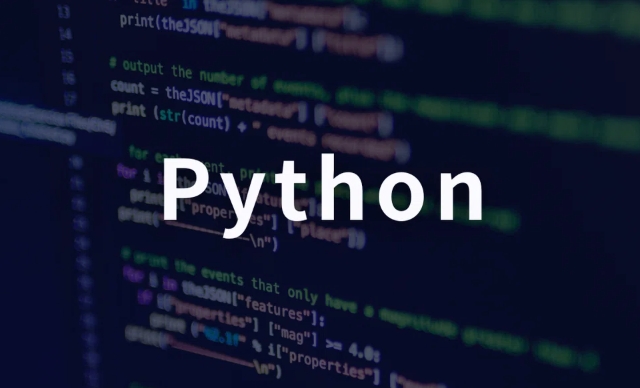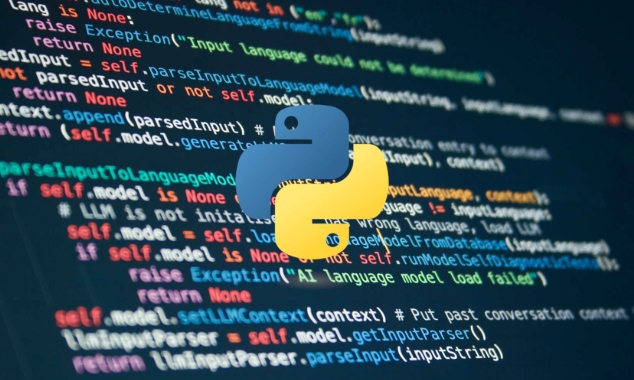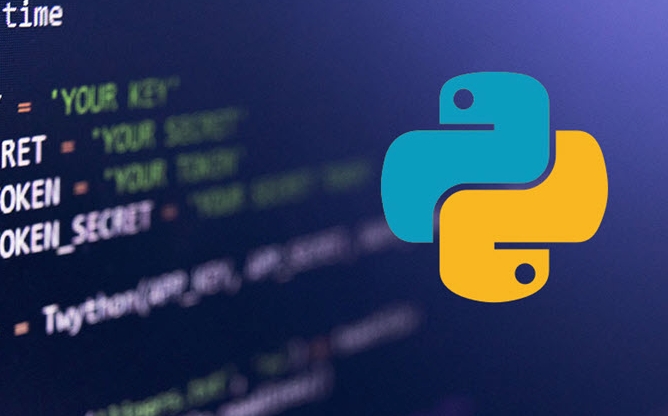Python is suitable for blockchain development, especially for beginners and educational purposes. It supports building simple decentralized apps (DApps), experimenting with smart contracts, and understanding blockchain mechanics. To start, install Python 3.x and key libraries like Web3.py, py-solc-x, and Flask or FastAPI. Use Ganache as a local Ethereum network for testing. A basic blockchain can be built using a Block class, a Blockchain class, SHA-256 hashing, and a proof-of-work mechanism. To interact with Ethereum, connect to a node via Web3.py and use ABI and bytecode for contract interaction. Smart contracts can be compiled and deployed using py-solc-x and Web3.py by compiling Solidity files, creating contract objects, sending signed transactions, and confirming deployment receipts. Testing is streamlined with Ganache for quick resets and scenario simulation.

Python isn’t the first language most people think of when it comes to blockchain development, but it’s actually quite capable and beginner-friendly for building blockchain applications. Whether you're experimenting with smart contracts, creating a simple decentralized app (DApp), or just learning how blockchains work under the hood, Python can handle a lot of it — especially in early-stage development or educational contexts.

Setting Up Your Development Environment
Before diving into actual blockchain coding, you’ll need a solid setup. Start by installing Python 3.x if you haven’t already. From there, you’ll want to install a few key libraries:
- Web3.py – For interacting with Ethereum-based blockchains
- Py-solc-x – If you plan on compiling Solidity smart contracts
- Flask or FastAPI – Useful if you’re building a web frontend or API layer
Use pip to install them:

pip install web3 py-solc-x flask
Also, make sure you have a local blockchain like Ganache installed for testing. It gives you a personal Ethereum network that resets every time you restart it — perfect for development.
Building a Simple Blockchain App from Scratch
If you want to understand how a blockchain works at a fundamental level, try writing your own basic version in Python. You don’t need to replicate Ethereum — just create blocks, hash them, and chain them together.

Here’s a rough outline of what you’d build:
- A Block class containing index, timestamp, data, previous hash, and nonce
- A Blockchain class managing the chain and handling mining logic
- Use SHA-256 from the
hashliblibrary to generate hashes - Implement proof-of-work (PoW) mechanism using a difficulty target
You won’t deploy this to production, but it’s a great way to internalize how blocks are structured and validated. Once you’ve got that working, you can start connecting it to external tools or expand it with peer-to-peer networking later.
Interacting with Ethereum Using Web3.py
Once you’re comfortable with the basics, you can start working with real blockchains. The most common use case is interacting with Ethereum via Web3.py.
To get started:
- Connect to an Ethereum node — either locally (like Geth or Ganache) or through a service like Infura or Alchemy
- Use Web3.py to send transactions, read contract data, or deploy smart contracts
- Work with ABI and bytecode to interact with deployed contracts
For example, to check an account balance:
from web3 import Web3
w3 = Web3(Web3.HTTPProvider("https://mainnet.infura.io/v3/YOUR_INFURA_PROJECT_ID"))
account_address = "0x..."
balance = w3.eth.get_balance(account_address)
print(w3.fromWei(balance, 'ether'))This kind of code is useful for backend services, wallets, or DApp backends. Just remember to keep private keys secure — never hardcode them in production code.
Deploying and Testing Smart Contracts
If you're writing smart contracts in Solidity, Python helps with deployment and testing. With py-solc-x, you can compile .sol files directly from Python.
Steps to deploy a contract:
- Compile the Solidity file and extract the ABI and bytecode
- Create a contract object using Web3.py
- Build a transaction with sender address, gas, etc.
- Sign and send the transaction using the sender’s private key
- Wait for the transaction receipt to confirm deployment
Testing is easier with Ganache since you can reset the chain quickly and simulate different scenarios without spending real ETH.
That's basically it. Python may not be the go-to language for high-performance blockchain systems, but it’s more than enough for prototyping, scripting, and integrating with existing blockchain platforms. And honestly, knowing how to glue everything together with Python makes you pretty flexible as a developer.
The above is the detailed content of Developing Blockchain Applications with Python. For more information, please follow other related articles on the PHP Chinese website!

Hot AI Tools

Undress AI Tool
Undress images for free

Undresser.AI Undress
AI-powered app for creating realistic nude photos

AI Clothes Remover
Online AI tool for removing clothes from photos.

Clothoff.io
AI clothes remover

Video Face Swap
Swap faces in any video effortlessly with our completely free AI face swap tool!

Hot Article

Hot Tools

Notepad++7.3.1
Easy-to-use and free code editor

SublimeText3 Chinese version
Chinese version, very easy to use

Zend Studio 13.0.1
Powerful PHP integrated development environment

Dreamweaver CS6
Visual web development tools

SublimeText3 Mac version
God-level code editing software (SublimeText3)

Hot Topics
 Polymorphism in python classes
Jul 05, 2025 am 02:58 AM
Polymorphism in python classes
Jul 05, 2025 am 02:58 AM
Polymorphism is a core concept in Python object-oriented programming, referring to "one interface, multiple implementations", allowing for unified processing of different types of objects. 1. Polymorphism is implemented through method rewriting. Subclasses can redefine parent class methods. For example, the spoke() method of Animal class has different implementations in Dog and Cat subclasses. 2. The practical uses of polymorphism include simplifying the code structure and enhancing scalability, such as calling the draw() method uniformly in the graphical drawing program, or handling the common behavior of different characters in game development. 3. Python implementation polymorphism needs to satisfy: the parent class defines a method, and the child class overrides the method, but does not require inheritance of the same parent class. As long as the object implements the same method, this is called the "duck type". 4. Things to note include the maintenance
 Python Function Arguments and Parameters
Jul 04, 2025 am 03:26 AM
Python Function Arguments and Parameters
Jul 04, 2025 am 03:26 AM
Parameters are placeholders when defining a function, while arguments are specific values ??passed in when calling. 1. Position parameters need to be passed in order, and incorrect order will lead to errors in the result; 2. Keyword parameters are specified by parameter names, which can change the order and improve readability; 3. Default parameter values ??are assigned when defined to avoid duplicate code, but variable objects should be avoided as default values; 4. args and *kwargs can handle uncertain number of parameters and are suitable for general interfaces or decorators, but should be used with caution to maintain readability.
 Explain Python generators and iterators.
Jul 05, 2025 am 02:55 AM
Explain Python generators and iterators.
Jul 05, 2025 am 02:55 AM
Iterators are objects that implement __iter__() and __next__() methods. The generator is a simplified version of iterators, which automatically implement these methods through the yield keyword. 1. The iterator returns an element every time he calls next() and throws a StopIteration exception when there are no more elements. 2. The generator uses function definition to generate data on demand, saving memory and supporting infinite sequences. 3. Use iterators when processing existing sets, use a generator when dynamically generating big data or lazy evaluation, such as loading line by line when reading large files. Note: Iterable objects such as lists are not iterators. They need to be recreated after the iterator reaches its end, and the generator can only traverse it once.
 Python `@classmethod` decorator explained
Jul 04, 2025 am 03:26 AM
Python `@classmethod` decorator explained
Jul 04, 2025 am 03:26 AM
A class method is a method defined in Python through the @classmethod decorator. Its first parameter is the class itself (cls), which is used to access or modify the class state. It can be called through a class or instance, which affects the entire class rather than a specific instance; for example, in the Person class, the show_count() method counts the number of objects created; when defining a class method, you need to use the @classmethod decorator and name the first parameter cls, such as the change_var(new_value) method to modify class variables; the class method is different from the instance method (self parameter) and static method (no automatic parameters), and is suitable for factory methods, alternative constructors, and management of class variables. Common uses include:
 How to handle API authentication in Python
Jul 13, 2025 am 02:22 AM
How to handle API authentication in Python
Jul 13, 2025 am 02:22 AM
The key to dealing with API authentication is to understand and use the authentication method correctly. 1. APIKey is the simplest authentication method, usually placed in the request header or URL parameters; 2. BasicAuth uses username and password for Base64 encoding transmission, which is suitable for internal systems; 3. OAuth2 needs to obtain the token first through client_id and client_secret, and then bring the BearerToken in the request header; 4. In order to deal with the token expiration, the token management class can be encapsulated and automatically refreshed the token; in short, selecting the appropriate method according to the document and safely storing the key information is the key.
 What are Python magic methods or dunder methods?
Jul 04, 2025 am 03:20 AM
What are Python magic methods or dunder methods?
Jul 04, 2025 am 03:20 AM
Python's magicmethods (or dunder methods) are special methods used to define the behavior of objects, which start and end with a double underscore. 1. They enable objects to respond to built-in operations, such as addition, comparison, string representation, etc.; 2. Common use cases include object initialization and representation (__init__, __repr__, __str__), arithmetic operations (__add__, __sub__, __mul__) and comparison operations (__eq__, ___lt__); 3. When using it, make sure that their behavior meets expectations. For example, __repr__ should return expressions of refactorable objects, and arithmetic methods should return new instances; 4. Overuse or confusing things should be avoided.
 How does Python memory management work?
Jul 04, 2025 am 03:26 AM
How does Python memory management work?
Jul 04, 2025 am 03:26 AM
Pythonmanagesmemoryautomaticallyusingreferencecountingandagarbagecollector.Referencecountingtrackshowmanyvariablesrefertoanobject,andwhenthecountreacheszero,thememoryisfreed.However,itcannothandlecircularreferences,wheretwoobjectsrefertoeachotherbuta
 Describe Python garbage collection in Python.
Jul 03, 2025 am 02:07 AM
Describe Python garbage collection in Python.
Jul 03, 2025 am 02:07 AM
Python's garbage collection mechanism automatically manages memory through reference counting and periodic garbage collection. Its core method is reference counting, which immediately releases memory when the number of references of an object is zero; but it cannot handle circular references, so a garbage collection module (gc) is introduced to detect and clean the loop. Garbage collection is usually triggered when the reference count decreases during program operation, the allocation and release difference exceeds the threshold, or when gc.collect() is called manually. Users can turn off automatic recycling through gc.disable(), manually execute gc.collect(), and adjust thresholds to achieve control through gc.set_threshold(). Not all objects participate in loop recycling. If objects that do not contain references are processed by reference counting, it is built-in






